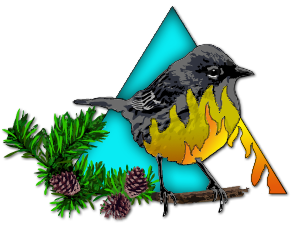Navigation

Upcoming Events
There are no events planned.
2018-2019 Webinar Series
Lake States Fire Science Webinar April 2019

Pine woodland and barren restoration:
What is possible with late dormant season burns?
Thursday April 18, 2019 at 2 PM Eastern/ 1 PM Central
Brian R. Sturtevant, PhD, USDA Forest Service Northern Research Station, brian.r.sturtevant@usda.gov
Kathleen M. Quigley, PhD, Michigan State University, Department of Plant, Soil, and Microbial Sciences, quigle44@msu.edu
Jessica R. Miesel, PhD, Michigan State University, Department of Plant, Soil, and Microbial Sciences, mieselje@msu.edu
Matthew B. Dickinson, PhD, USDA Forest Service Northern Research Station, matthew.b.dickinson@usda.gov
Christel C. Kern, PhD, USDA Forest Service Northern Research Station, christel.c.kern@usda.gov
Randy K. Kolka, PhD, USDA Forest Service Northern Research Station, randall.k.kolka@usda.gov
Deahn M. Donner, PhD, USDA Forest Service Northern Research Station, deahn.donnerwright@usda.gov
Matthew Bushman, USDA Forest Service, National Forests in North Carolina, matthew.bushman@usda.gov
Brian Heeringa, USDA Forest Service, Chequamegon-Nicolet National Forest, brian.heeringa@usda.gov
Fire exclusion and land use change have resulted in widespread loss of pine barrens in the Great Lakes region, which now cover less than 1 % of their pre-settlement extent. In the Moquah Barrens (Wisconsin, U.S.), the Forest Service uses late dormant season prescribed fire, along with timber harvesting and brush cutting, to maintain and expand this biologically diverse habitat. We investigated the influence of brush cutting and prescribed fire on soil heating levels relevant to restoration goals. We monitored 111 burned plots and 23 unburned reference (unburned 60+ years) plots before, during, and after four large-scale prescribed burns (430 – 780 ha/unit) conducted in late spring (May) 2016 and 2018. Fuel manipulations (brush addition/removal) were applied to a subset of burn plots across a range of restoration stages to provide contrasts in fire behavior, fuel consumption, and burn severity. Woody fuel additions enabled more intense fires, but duff consumption was minimal, and mineral soil heating was largely decoupled from fire behavior due to the insulating effects of the overlying moist duff. Soil hydraulic conductivity was higher at burned plots than at reference plots, suggesting that fire exclusion may deteriorate well-drained soil conditions which sustain native barrens communities. Soil physical and chemical responses varied in magnitude of change and temporal persistence. The soil seedbank showed minimal responses to prescribed fire, and densities of hardwood sprouts regenerated to prefire densities within one year post-burn, regardless of fuel treatments. Our preliminary results support a growing body of evidence that high subsurface moisture and low soil temperatures of late dormant season burns dampen the desired soil heating effects, regardless of fuel additions. We discuss the implication of our results for reversing the interrelated processes of woody densification and mesophication of pine barren, savanna, and woodland ecosystems of the northern Great Lakes region.
YouTube Recording
MP4 video (streaming)
- To Test your computer internet connection and compatibility with adobe connect, click here and follow the prompts.
- You will need to use the speaker output from your computer, so make sure you know how to control your speaker volume and attach external speakers for better performance. We will prompt you to type questions in the chat box throughout the session.

.png)